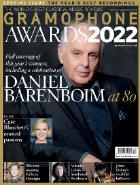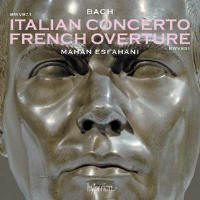Texte paru dans: / Appeared in: |
|
|
Outil de traduction |
|
|
In his public statements, and perhaps a bit more temperately in his actual performances, harpsichordist Mahan Esfahani has declared independence from any puritanical or dogmatic application of historical performance practice. In this recording, devoted to the two key works of Bach’s Clavierübung II – the Italian Concerto and the Overture in the French Style – he makes that independence even more explicit, greatly expanding the dynamic and expressive capacity of the harpsichord. His particular instrument was made in 2018 in the Prague workshop of Jukka Ollikka, a double-manual showpiece with 16ft and 4ft registers for extra colour, as well as a carbon-fibre composite soundboard. It produces organ-like sonorities, especially in its lowest reaches, and Esfahani exploits its full range, including some curious and even eccentric registration choices. For those, turn first to his reading of the four duets from the Clavierübung III, more often thought of as organ works. The expanded dynamic range of the instrument is particularly welcome in the solo-ensemble contrasts of the Italian Concerto, and is particularly effective in the illusion of a solo wind instrument from the second movement. The expanded colouristic possibilities are best heard in the capacious collection of dances from the Overture, which exploit a range of effective registration choices. But Esfahani isn’t just showing off an instrument. His ornamentation and articulation are inventive and engaging, and will send alert listeners back to the score as the ear tries to tease out exactly what he’s doing. This is edgy, hyper-attentive playing, with rhythmic figures etched with a sharp, swift and precise stylus. It can be exhausting, and the album is best heard work by work rather than as a whole. But be sure to save special attention for the Capriccio in B flat ‘on the departure of his beloved brother’, an early work and sometimes dismissed as naive and not Bach at his mature best. Esfahani takes it seriously, finding genuine heartbreak in the slow, deliberate resolution of a simple ornament in the first movement, and powerful conflict and even terror in second and third movements (with effective realisation of the figured bass). But the concluding fugue is the pièce de résistance, turning this supposed leave-taking into a wild declaration of independence such that the recording itself becomes not just a collection of works by Bach but a performer’s manifesto. |
|




